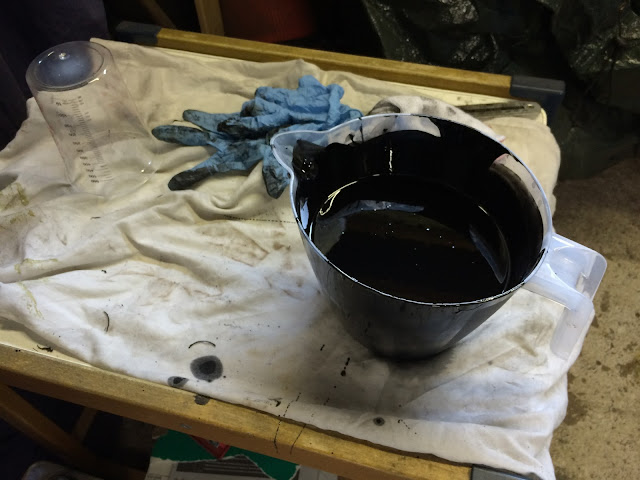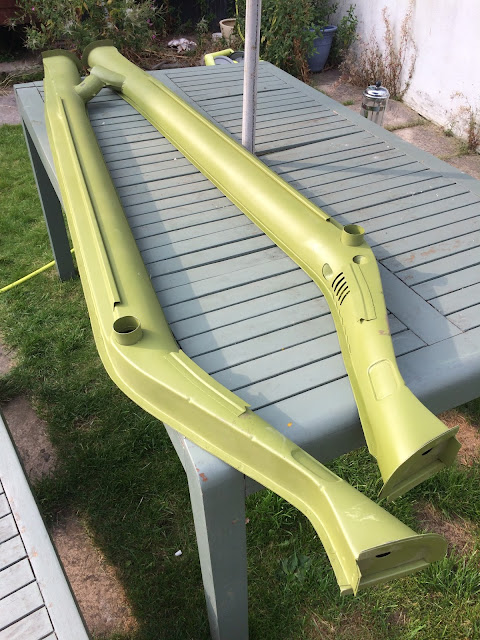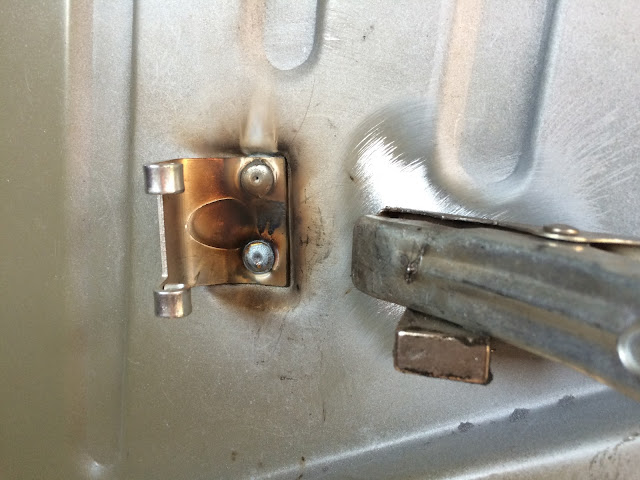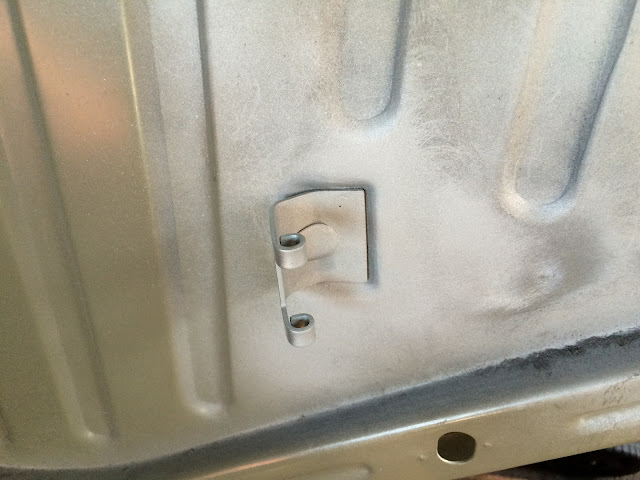It looks like new, wouldn't you agree?!
Now that the grand reveal is out of the way I will back up a bit and explain the painting process. This was a steep learning curve for me and I would be lying if I said that I wasn't a touch nervous entering into it! For some considerable time I have been mulling over the best method and almost gone down the foam roller and brush route (I kept my receipt, so I can take all those particular items back to the shop). Foam rollers would have been straight forward and simple, but that is not what this project is about! Having asked for advise on the Volkszone forum I opted to spray using a HVLP gravity fed gun with a 2.2mm nozzle. I opted for a cheapo Sealey SSG501 that I picked up off eBay and I also added an additional water trap which mounted to the inlet (I already had the regulator laying around):
Thanks to Dangerman who loaned me the use of the adjoining garage to spray in, it would have been near impossible to do it without this space! I thoroughly cleaned the area out so that there was no trace of dust that could be disturbed by the spray gun and end up in my fresh paint!
To get the paint to the right consistency for spraying it needed to be thinned by about 20%. For the first layer I mixed up far more than I needed as I had no clue how far the stuff would go, but for the additional coats I only mixed up 720ml (300ml comp A, 300ml comp B and 120ml of No 17 thinners):
A little time-lapse of the first layer going on (unfortunately the camera didn't capture the very beginning):
The best inter-layer adhesion occurs before the previous layer fully cures, so I waited 3 days before adding the 2nd coat and a further 3 days before the final coat. The 2nd and 3rd coats were more challenging to apply as it is obviously not as easy to see the areas that have been freshly sprayed versus those that have not. Requires a bit more focus and strategy, but in on reflection I think I did a pretty good job for my first time!
After a couple of weeks of undisturbed drying time I shall unmounts the chassis from the rotisserie and coat the front and rear areas that are currently inaccessible.
...and relax!


















































